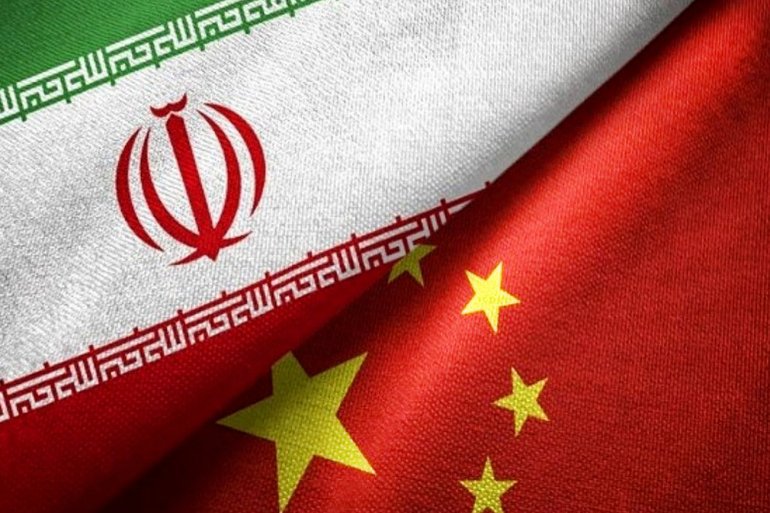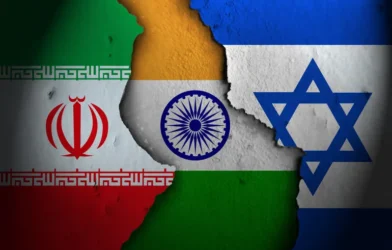Subtotal $0.00
The title of this article may seem surprising at first glance, but as we will see in the following lines, this may be the truth. Despite the open hostility between Saudi Arabia and the rest of the Gulf states with Iran, I believe that these countries contributed to pushing Iran towards China when they chose to side with the US-Israeli camp.
The Gulf states that helped the U.S. weaponize oil, directing it by proxy at Russia and Iran, have once again chosen to help Washington's powerful ally encircle Iran by stifling its ability to export oil, especially to India, a country with a millennia-old relationship with Iran.
India was one of the largest importers of Iranian gas, and this allowed Iran to continue to benefit from this important wealth, in exchange for preferential prices and conditions, but in the term of former US President Donald Trump, who withdrew from the nuclear deal with Iran at the instigation of Israel and the Gulf, economic sanctions were imposed on Iran targeting this important sector. At the time, the Turks tried to convince their American allies to exempt them and a group of countries, including India, from complying with these sanctions. Turkish Presidential Advisor Ibrahim Qalan traveled to New Delhi to try to convince the Indians to help him pressure the Americans in this regard, but as a result of Gulf promises to compensate for any shortfall resulting from the boycott of Iran and specializing India with huge investments, the Turkish attempt failed and India aligned with the United States of America and its allies, away from its traditional strategic neighbor, Iran.
This coincided with a controversial Indian move, namely the annexation of the disputed Kashmir region with Pakistan, accompanied by visits by the Indian Prime Minister to the Gulf countries and his reception of allies, amid cold Gulf reactions to Pakistan's demand that its Gulf allies stand by it on the Kashmir issue, whether by convening the Organization of Islamic Cooperation or supporting its positions in the United Nations, which Pakistan read as a Gulf rapprochement with India at its expense, and a real shift in the Gulf position This was interpreted by Pakistan as a Gulf rapprochement with India at its expense and a real shift in the Gulf position. Pakistani positions critical of both Saudi Arabia and the UAE were issued by Pakistani Foreign Minister Shah Mahmood Qureshi, and corresponding Saudi threats and pressures; both the Pakistani army chief and the prime minister tried to defuse them, but it is clear that the rift that the Pakistani army chief and the prime minister wanted to defuse. However, it has become clear that the rift that the Gulf states, with America and Israel behind them, wanted to create between India and Iran has extended to form a wide chasm of suspicion between Pakistan and Saudi Arabia, plunging this warm relationship into a state of unprecedented coldness.
It seems that Tehran has been vacillating in its relationship between India and China. India has long tried to use its relationship with Iran to counter China's rise by establishing a land line from the Iranian port of Chabahar through Central Asia and Russia, in partnership with Japan, as an alternative to China's Belt and Road Initiative, and trying to establish a land gas line from Iran through Pakistan, but all of this was dealt a painful blow when New Delhi found its interest with the US axis, with the help of Saudi Arabia and the UAE. But all this was dealt a painful blow when New Delhi found its interest with the US axis, with the help of Saudi Arabia and the UAE.
The frosty relationship between Iran and India has led Tehran to take a more aggressive stance against New Delhi, with its officials, led by the Leader, criticizing Indian practices in Kashmir, highlighting the persecution of the Kashmiri people, and rapprochement with Islamabad, whose relationship with Riyadh has also seen an unprecedented decline, as mentioned above, which has warmed this traditionally frosty relationship and made the relationship with China more meaningful than holding on to the high-minded Indian ally.
Of course, the relationship between Iran and China is not new. The strategic cooperation agreement, which Western media claimed was worth nearly $400 billion and was signed by Chinese State Councilor and Foreign Minister Wang Yi with Iranian officials, is not surprising or new, as it builds on a visit by the Chinese president to Tehran in 2016 and takes it to an advanced stage. It encompasses four axes: Energy, Infrastructure, Investment, and lastly, Technology Support. These areas mean a greater presence of Chinese influence in the region, especially since Iraq had preceded Iran in signing a similar agreement based on supplying China with oil over twenty-five years, in exchange for prepayments of up to $200 billion. With an excellent relationship with both Syria and the Israeli occupation, China has created a land bridge from the far east of Asia through Pakistan, Iran, Iraq and Syria to the shore of the Mediterranean Sea, away from the threats of open seas, thus turning into a country bordering Europe.
Through the financial partnership between the two countries, Iran's transactions will take place through the Chinese banking system, and through the geographical connection formed by the Belt and Road Initiative projects, Iran will be able to export energy to China without restrictions, all in local currency, which means weakening the US dollar.
Perhaps the most important thing that distinguishes Chinese behavior from American behavior in the region is that American behavior depends on inciting the countries of the region against each other and sowing animosities between them, and this is currently evident between Saudi Arabia and Iran, but Chinese behavior is based on promoting a "win-win" game, and presents itself as a mediator between rivals, such as Iranians, Saudis, Palestinians and Israelis, through its special relationship with everyone and its generous promises of development and prosperity in a region that has long suffered from wars and their scourges.
We have seen how both Saudi Arabia and China have focused on the integration of China's Belt and Road Initiative and Prince Mohammed bin Salman's Vision 2030, reflecting an unprecedented development in China's role in the region, which has begun to take a more proactive stance in regional affairs, competing with the United States in a field it has long seen as its own.
It is notable that what characterizes the behavior of the countries of the region - the owners of the land - is the absence of a comprehensive project that deals with the major powers from a state of unity and national interest, so they may pay the price of this dangerous rivalry between the major powers if it occurs, and their benefit from any positive development will be very limited.



